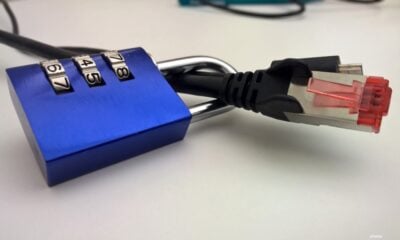Security
How To Send Documents Securely Over The Internet
The fear businesses and people alike still have today is: will my documents arrive safely? Cybercriminals could and do intercept documents before they reach their intended destination.
Therefore the way to prevent your documents from being accessed by hackers is to encrypt your files. What this security measure does is not stop the interception, but it prevents your documents from being disclosed. Only the intended recipient should have access to open and read them.
In this article, you’ll find useful information on how to send your documents securely and who you can use for credible encryption solutions. Plus we have included recommendations on how to maximize your security when exchanging files some common mistakes that you should avoid.
The starting point is to encrypt your messages and documents. Encryption can be compared to a system where you have a lock and a key. Without a key, it won’t be possible to open the lock. Encryption is considered the golden standard of cybersecurity today.
Avoid Email
Emails might be the most-used channel for communication, and it’s also the most trusted, and this is the problem as it’s also loved by hackers.
The security of your email depends on the security of your network. On receipt of the document, its privacy will also depend on the security of the recipient’s network.
Among all the possible means of exchanging documents, email is probably the easiest to hack. Therefore think carefully about what email system you’re using and if it allows for message encryption.
Use Passwords
Nearly all the programs made for creating and editing documents feature the password protect option. Here, we won’t describe the step-by-step process of finding it in the settings because things differ from one program to another — so you can google it.
Never send the password together with the file; otherwise, your attempt at protection will be useless.
Some programs don’t allow to copy and paste the passwords but require users to insert them manually.
Create Zip Files
If you’re sending multiple files, you can compress them to an archive and protect it with a password. Plus this process is a bit trickier but also safer so you should read an article on how to Create Zip Files on a Mac or a PC and how to attach security code to this archive.
Beware though if both you and the recipient lose the security code, no one might ever be able to access your file. Creating method offers a basic level of protection that doesn’t guarantee 100% safety.
Firefox Send
Firefox allows you to share files from your computer with anyone via a private link. You create this link, and you send it to the recipient, or you share it on your social networks, or you publish it elsewhere. You can use advanced privacy setting and determine the following parameters:
- How long the link remains valid
- How many times the recipients can download the file
- Can the recipient access the file with or without the password
Firefox Send is a convenient option that doesn’t require you to install any additional software on your device, clogging its memory. Plus it is considered to highly reliable, and thousands of people entrust their confidential data to it.
DigiSigner
DigiSigner is another option for encrypting documents, and this online service encrypts to the latest industry standards.
All you need to do is to sign up for the system using your email, select a file from the cloud and send it to the recipient’s account using their email. Before submitting, you’ll be able to add a comment to your document.
The files that you send will be saved in your account so that you can access them at any moment. Before submitting a document, you can leave your electronic signature on it. DigiSigner is easy to use, reputable, and trustworthy.
Rubex
Rubex is a document management software tailor-made for accountants. It features bank-grade encryption and a simple, intuitive interface. You can keep your documents in the system and share them with your clients and colleagues.
Rubex also features automated workflows that you can customize for the needs of your business. With this useful function, you won’t need to send reminders to your clients and partners — Rubex will send out auto-reminders and later send the received documents to their end recipients, without taking your time and attention.
iFax
iFax is an app that features end-to-end encryption. Your file will be fully encrypted from the moment you press the “Send” button till it lands on the device of its receiver.
If a hacker intercepts the document, they won’t be able to make use of it. Even though iFax is a technologically advanced app, it’s remarkably user-friendly. You’ll learn how to use it in a matter of minutes.
Conclusion
Now you know how to safely exchange files online. Even if it’s not your financial credentials, a scan of your passport, or a substantial contract, you’ll feel better if you know that no third-party will intercept your documents. It will take you just a few minutes to learn to encrypt your files. Once you understand how to do this, it will become your daily habit for all the devices you use.
About the author:
Naomi Stone (@Naomi99Stone) is a cybersecurity enthusiast and Mac aficionado. She’s passionate about covering topics like Mac cybersecurity, Mac tips & hacks, Mac’s how-to guides. She is a contributor to Cyber Experts and Cybers Guards.


